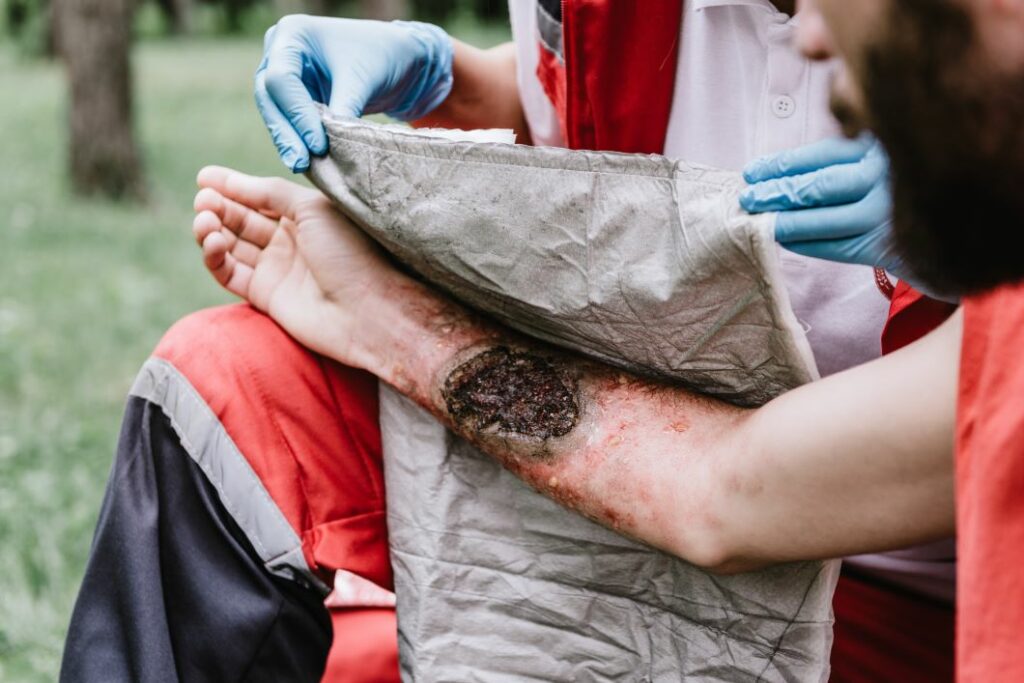Introduction
When it involves emergency scenarios, every 2nd matters. One of the most important skills anybody can find out is how to recognize no breathing and respond appropriately. This article explores the relevance of recognizing no breathing, the methods included, and how they suit wider emergency care protocols. On the planet of fundamental vs advanced life support, comprehending the preliminary signs of respiratory system failure can suggest the difference in between life and fatality.
Recognizing No Breathing: The Primary Step in Emergency Care
Recognizing no breathing is a necessary ability that creates the bedrock of effective emergency treatment. The procedure starts with examining responsiveness and evaluating whether somebody displays indicators of life. Most individuals presume that if an individual isn't breathing, they're unconscious or in distress; however, comparing regular respiration and no breathing calls for training and awareness.
The Importance of Early Recognition
Identifying an absence of breathing can set off instant action, potentially conserving a life. The brain is extremely conscious oxygen deprival; within minutes, irreparable damage can take place. Thus, early recognition is crucial for initiating proper intervention strategies.
Signs of No Breathing
- Absence of Movement: Look for chest movements that show inhalation and exhalation. No Distinct Breath Sounds: Pay attention closely; if you hear nothing after a number of seconds, it's time for action. Skin Shade Changes: Cyanosis or blue skin around lips and fingertips might suggest serious oxygen deprivation.
Checking Responsiveness
Before ending that a casualty is not breathing, checking their responsiveness is essential. Carefully drink their shoulders and yell loudly to see if they respond. A less competent person calls for prompt assistance.
Basic vs Advanced Life Support
Emergency care can generally be categorized right into 2 major kinds: basic life support (BLS) and advanced life assistance (ALS). Recognizing the difference assists -responders know when to intensify their actions.
Basic Life Support (BLS) Techniques
BLS concentrates on essential strategies such as CPR (Cardiopulmonary Resuscitation) that any person can do regardless of prior training. It aims at preserving blood circulation till expert help arrives.
Advanced Life Support (ALS) Protocols
ALS includes a lot more complicated procedures like intubation and medicine administration by experienced medical employees. Recognizing when to transition from BLS to ALS can conserve lives.
Hospital Codes and Protocols
Understanding health center codes is necessary for providing efficient emergency care. Each hospital might have its very own system in position for calling for aid throughout a crisis.
Common Healthcare facility Codes
|Code|Indicating|| ------|----------------------------------|| Blue|Heart attack|| Red|Fire|| Orange|Dangerous Product Case|
Knowledge of these codes ensures CPR Courses Hobart effective communication in between ordinary -responders and medical professionals.
Public Defibrillator Usage
Automated Exterior Defibrillators (AEDs) are significantly available in public areas. Knowing how to operate one could significantly boost survival prices throughout heart emergencies.
Steps to Use an AED
Turn on the AED. Apply pads according to diagrams. Follow voice prompts. Ensure no one touches the individual throughout shock delivery.BLS Accreditation: Why It Matters
Obtaining BLS accreditation furnishes individuals with essential abilities for responding properly in emergencies. Courses generally cover recognizing no breathing, performing CPR, using AEDs, and other lifesaving techniques.

Benefits of Being Certified
- Confidence in emergency situation situations Knowledge about upgraded protocols Ability to aid good friends or relative in distress
Identifying No Breathing: A Much Deeper Dive
Understanding exactly how to identify no breathing involves a methodical method:

Assessment Steps
Check responsiveness. Open the airway making use of head-tilt-chin-lift technique. Look, listen, and really feel for breathing for up to 10 seconds.If there's still no sign of breath after these actions, start mouth-to-mouth resuscitation immediately!
Taking Switches on Compressions
When executing mouth-to-mouth resuscitation with several rescuers, it's important to take turns on compressions:
Why Turning is Important
Rotating compressors avoids fatigue which might bring about inefficient compressions or reduced efficiency over time.
Lower Compression Depth: Why It Matters?
Maintaining appropriate compression depth throughout mouth-to-mouth resuscitation is vital:
- Adult compressions need to go to the very least 2 inches deep yet not more than 2.4 inches. For kids, go for concerning 1/3 the deepness of their upper body-- about 1.5 inches.
Accurate compression depth ensures ample blood circulation without causing harm.
Slow Compression Rate: Finding Balance?
While speed matters in CPR, keeping an ideal compression rate dramatically affects effectiveness:
- Aim for a rate in between 100-- 120 compressions per minute. Too slow ways insufficient circulation; too quick concessions depth.
Finding this balance inevitably boosts survival chances!
Maintaining Calmness During Emergencies
During emergencies, staying calmness is important:

Techniques to Keep Composure
Focus on your breath-- sluggish inhalations can help reduce anxiety. Stay task-oriented-- focus on workable actions as opposed to overwhelming feelings. Keep interaction clear-- straight others successfully without panic-induced chaos.Checking Casualty's Breathing Again After Initial Assessment?
After starting CPR or using an AED:
Reassess breathing every couple of minutes if possible. Note any changes; this info will be valuable when specialists arrive.Regular reassessment guarantees that you adjust your activities based on real-time observations!
Frequently Asked Inquiries (FAQs)
Q1: What need to I do initially when I presume somebody isn't breathing?
A1: Check responsiveness by trembling them delicately and shouting loudly before analyzing their breathing patterns further.
Q2: For how long ought to I look for breathing?
A2: Preferably check for as much as 10 secs while taking a look at upper body motion and listening carefully for breath sounds.
Q3: When should I call emergency situation services?
A3: If you identify that someone isn't receptive or otherwise breathing typically after CPR Training in Hobart your evaluation-- call emergency services immediately!
Q4: Can I use an AED on anyone?
A4: Yes! AEDs are made for usage on adults and youngsters alike; simply comply with instructions thoroughly based on age standards given with each device.
Q5: Exactly how frequently must rescuers switch functions throughout CPR?
A5: Ideally every 2 minutes; this helps keep efficient compressions without exhausting team members as well quickly!
Q6: Is BLS accreditation necessary even if I'm not a healthcare provider?
A6: Definitely! BLS certification furnishes daily residents with essential skills required during emergency situations-- expertise can conserve lives!
Conclusion
Recognizing no breathing genuinely stands as the very first step in emergency situation treatment-- an essential ability that encourages individuals facing critical circumstances everyday! Whether you're considering BLS accreditation or simply desire sensible understanding applicable during unforeseen events-- understanding how to act swiftly when faced with respiratory system failure can indicate every little thing! Remembering these concepts sets you up not equally as an onlooker but as an energetic participant prepared to make a difference when it counts most!
First Aid Pro North Hobart (RTO 31124) is one of Australia’s leading providers of accredited First Aid and CPR training. We specialise in Basic Life Support, CPR & First Aid, NDIS HISS, Advanced First Aid and many other accredited courses. Our training is both convenient and comprehensive, combining online and face-to-face learning options to suit your needs. Keep your first aid certificates up to date with same-day certification upon completion. Plus, find a lower price, and we’ll instantly beat it by 10%! Conveniently located at the Braille Library, at the back of Rydges Hobart at 393 Argyle Street, North Hobart, TAS 7000. Visit our website for course dates, directions and parking details
First Aid Pro North Hobart (RTO 31124) is one of Australia’s leading providers of nationally accredited First Aid and CPR training. We deliver a wide range of courses, including Basic Life Support, HLTAID009 CPR, HLTAID011 Provide First Aid, HLTAID012 Childcare First Aid, NDIS HISS, Advanced First Aid and more. Our training is flexible and convenient, with online, blended and face-to-face options available to suit your schedule. Enjoy same-day certification so you can keep your qualifications current without delay. With our Price Beat Guarantee, if you find a lower price, we’ll beat it by 10%. We are conveniently located at the Braille Library, behind Rydges Hobart, 393 Argyle Street, North Hobart TAS 7000. 👉 Visit our website to view upcoming course dates, directions and parking information.